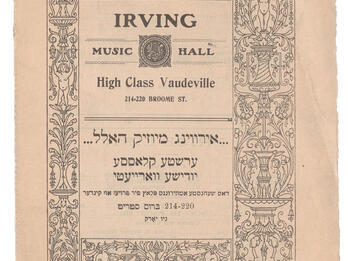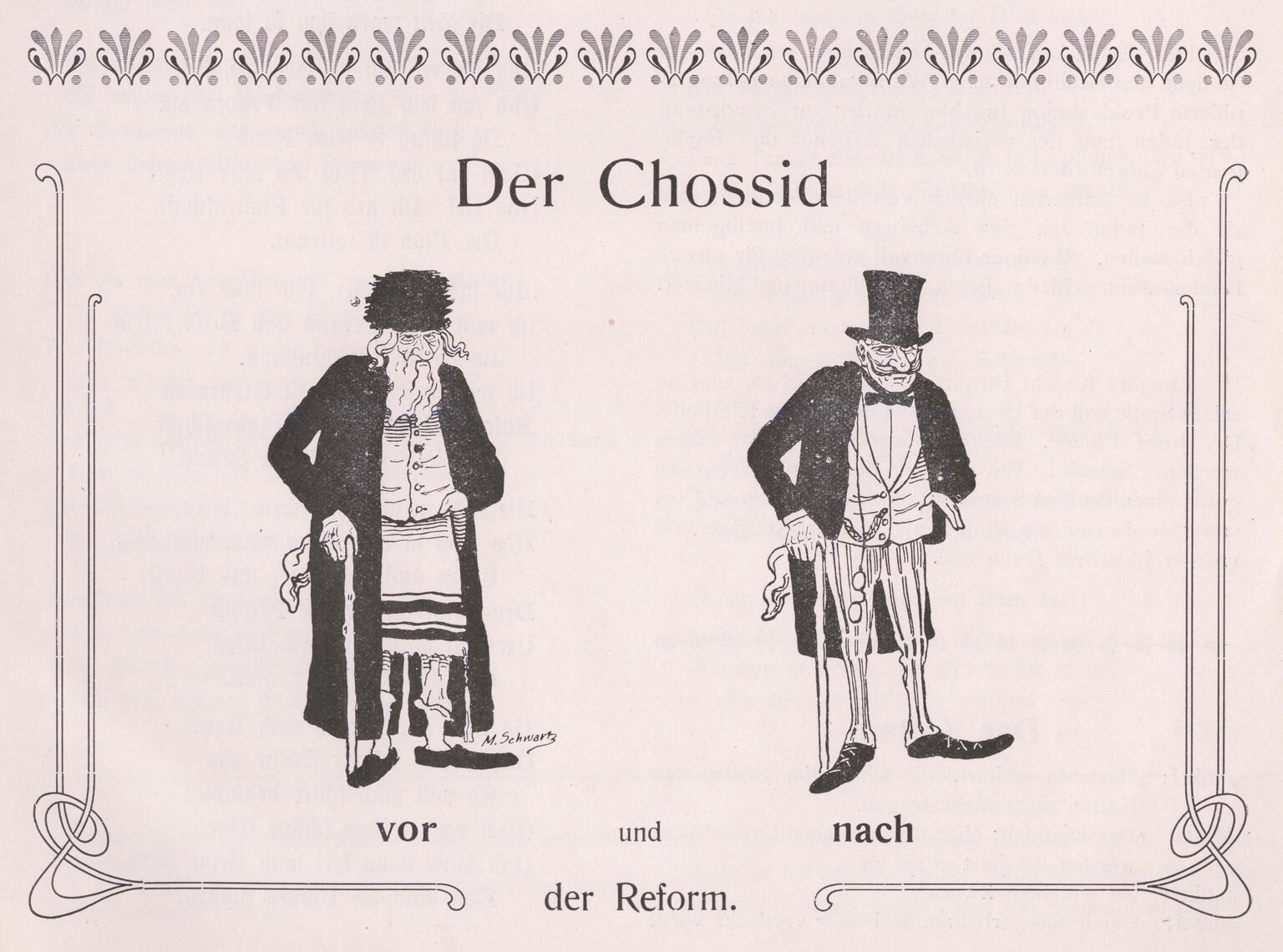The Reformed Hasid
Max Jungmann
1905
Credits
Der Schlemiel: Illustriertes jüdisches Blatt für Humor und Satire, June 1, 1905. Courtesy Leo Baeck Institute, New York.
Published in: The Posen Library of Jewish Culture and Civilization, vol. 7.
You may also like

Darwinian

Irving Music Hall
Between the River Prat and Hidekel Stream
The Quarrel between Hebrew and Yiddish
A Bintel Brief
Frightened Mothers Surround the Neighborhood: Tonsil Riots
Creator Bio
Max Jungmann
Born in Schildberg, Germany (today Ostrzeszów, Poland) to an assimilated family, Max Jungmann studied medicine in Freiburg and Berlin, and was active in a Zionist student group. In 1903, following a meeting with Theodore Herzl and the Zionist leader Sammy Gronemann, Jungmann started Der Schlemihl, an illustrated German Zionist satirical monthly (1903–1906), which also employed the leading German Zionist writers Dr. Theodor Zlocisti and Leo Winz. Jungmann was active in the nationally minded and postassimilationist wing of the German Jewish literary world, editing the short-lived Die jüdische Moderne. Jungmann was also an essayist and poet. He immigrated to Palestine in the late 1930s.
Places:
You may also like

Darwinian




